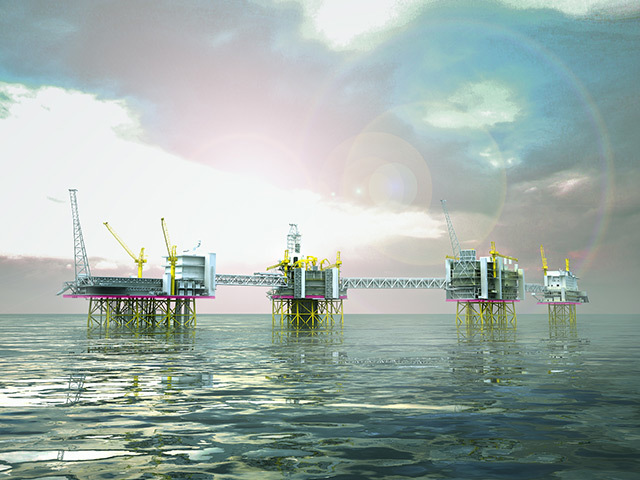
In the face of depleting fields and increased energy demand, operators and suppliers depending on the Norwegian Continental Shelf (NCS) need to seriously address chronic concerns or face riding the decline curve for the foreseeable future, according to industry leaders.
Attendees were warned at the this year’s ONS the time to start deploying Enhanced Oil Recovery (EOR) was yesterday.
Trevor Garlick, regional president of BP North Sea, urged the industry to start including EOR techniques and systems in the opening dialogues regarding new discoveries.
He said: “There’s an old saying that the best time to plant a tree is 20 years ago, but if you can’t do that plant one now.
“My suggestion would be for Norway to start planting some EOR schemes today.”
According to the company leader, Norway already has a distinct advantage over the UK – time.
“Norway’s assets are younger, the fields are bigger and they are discovering more,” he said.
However, Trevor credited Sir Ian Wood’s Wood Review for forcing EOR into the foreground of the UKCS’s agenda.
“The biggest opportunity we have is through better industry collaboration,” he said.
“I know collaboration is like the word standardisation which everyone gets worked up about but the bottom line is we should share more.”
Tore Halvoren, senior vice-president of subsea technologies for FMC, backed Trevor’s call for better collaboration.
However, he touted a group approach to tackling the speed in which technology hits the marketplace as a top priority in driving mounting operating costs down.
“The first rule of getting costs down is to use less parts but we have to have a way to reach the level of industrialisation we deserve,” he said.
“One of the main dilemmas we face in regards to technology is the fact that it takes around 30 years for a step change in technology to penetrate 50% of the market.”
Tore highlighted the success rate of an offshore subsea pump’s market penetration rate compared to an onshore subsea pump.
In the same time period, the offshore pump captured just 3.5% compared to the onshore pump’s 95% penetration rate, according to the subsea expert.
“It takes a tremendously long time to penetrate the market we’re in,” he said.
“It’s really not natural.”
He also called on the industry to review its complicated documentation process as the necessary documentation ranges from 80 to 2,000 pages depending on the company.
By streamlining the process the industry can more aggressively attack new subsea frontiers, according to Tore.
“This will not change with a small incremental adjustment,” he said.
“This will take a fundamental change.”
Arne Sigve Nylund, executive vice president of Statoil, also urged the supply chain to increase efficiency and streamline processes as part of an industry wide effort to manage negative costs and secure the future of the NCS.
“We are investing more while production is diminishing and returns are dropping,” he said.
“This isn’t a Statoil specific challenge this is a challenge for the industry as a whole and it’s not sustainable as it its now.”
He also called on the Norwegian government to continue to provide a predictable framework for the industry to operate in.
If authorities, operators and the supply chain all recommit themselves to securing the longevity of the NCS, it gives the industry the best chance of finding and bringing on line developments like Statoil’s Johan Sverdrup project, he said.
The development, which will produce between 1.8 and 2.9 billion barrels of oil, is expected to have a 40 year field life, countering the decline of the some of the region’s more mature fields.
“It’s the beginning of the future for the NCS,” he said.
“The NCS has a long term and positive future but it will depend on the our ability to address the key challenges we face today.”
Recommended for you
